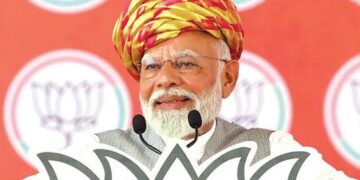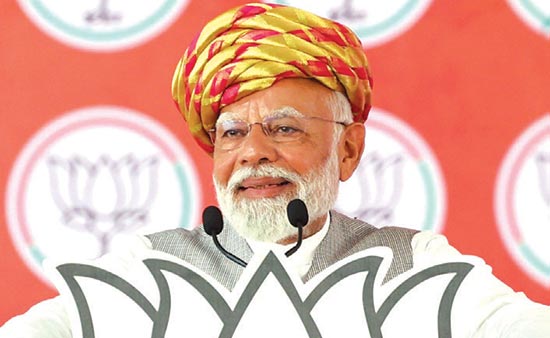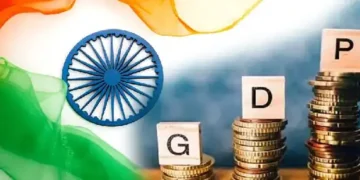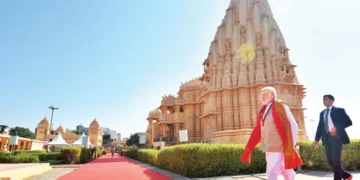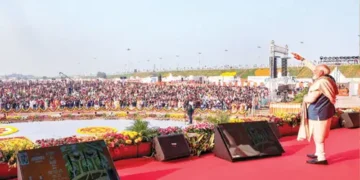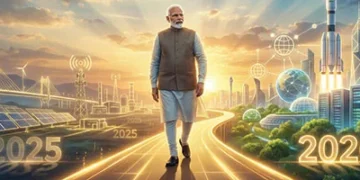 LET’S broaden our line of inquiry and look outside. Japan enjoyed the tag of the world’s secondmost powerful economy for close to fve decades, till 2010. Then it slipped to the third position, and then in 2023, it came down to the fourth. India, on the other hand, witnessed sustained growth, taking the ffth position and is now poised to overtake Japan. What happened? In simple terms, Japan failed to create a ‘virtuous cycle’ of growth despite having at its helm Shinzo Abe – known for his economic strategy that was called ‘Abenomics’ – as the Prime Minister. Abe led his party to victory twice; both wins attributed to Abenomics delivering results in terms of GDP, corporate earnings and employment.
LET’S broaden our line of inquiry and look outside. Japan enjoyed the tag of the world’s secondmost powerful economy for close to fve decades, till 2010. Then it slipped to the third position, and then in 2023, it came down to the fourth. India, on the other hand, witnessed sustained growth, taking the ffth position and is now poised to overtake Japan. What happened? In simple terms, Japan failed to create a ‘virtuous cycle’ of growth despite having at its helm Shinzo Abe – known for his economic strategy that was called ‘Abenomics’ – as the Prime Minister. Abe led his party to victory twice; both wins attributed to Abenomics delivering results in terms of GDP, corporate earnings and employment.
Abenomics had ‘three arrows’, the frst being an aggressive monetary policy, the second fscal consolidation, and the third a growth strategy. While the frst two yielded the desired results, the third failed as the strategists ignored the fact that the Japanese economy faced an aging population.
In contrast to Japan, India is a young nation with average age below 30 years. This is expected to rise to 39 by the year 2050, roughly similar to Japan’s position in the year of Y2K. Prime Minister Narendra Modi, being well aware of the demographics, thinks in short, medium and long terms. With the target deadline of 2047 to attain a developed nation status (Viksit Bharat 2047), his strategy hinges on pushing ahead aggressively with plans and projects that will ensure that India does not repeat the Japan story.
Brimming with youthful energy, India stands at a crucial juncture in its quest to become a global economic powerhouse. With an average age below 30 years, the country is uniquely positioned to harness the innovative and dynamic potential of its young population. PM Modi has consistently advocated for empowering the younger generation at various levels of decision-making. His strategic appointments of young leaders to key posts exemplify his commitment to this vision.
Avoiding ‘Japan trap’
The focus on youth, the PM is confdent, will help India avoid the ‘Japan trap’. Despite substantial Government eforts and monetary stimulus, Japan’s aging population impeded the structural and governance reforms necessary to sustain its economic dynamism. This demographic challenge underscores the critical importance of youthful leadership in driving economic innovation and growth.
Prime Minister Modi’s emphasis on youth leadership is not merely a political strategy but a strategic imperative for India’s future. Young leaders bring fresh perspectives, innovative solutions, and a robust energy that can revitalise governance and policymaking processes. This approach is particularly crucial in states that are pivotal to economic development.
Learning from Japan
Japan’s economic stagnation, despite aggressive monetary policies, highlights limitations of an aging leadership in enacting necessary reforms. The demographic reality of an aging population creates a conservative bias in policy-making, often leading to resistance against transformative changes. Japan’s experience demonstrates that even with signifcant fnancial resources, an economy can struggle without the dynamism that a younger demography can provide.
The contrast between India and Japan is stark. While India boasts a median age of 29.5, Japan’s median age is 49.6 years. This demographic disparity signifcantly impacts the countries’ respective abilities to adapt to and shape global economic trends.
Embracing digitalisation
PM Modi’s recognition of India’s potential and his eforts to integrate young leaders into the highest levels of governance are steps in right direction. Younger leaders are more attuned to the needs and aspirations of a youthful population, which constitutes the majority of India. Moreover, young leaders are more likely to embrace digitalisation, a critical component of economic growth. With the global economy increasingly driven by technology and digital platforms, India’s young leaders can spearhead initiatives that position the country as a leader in the digital economy.
Prime Minister Modi’s commitment to promoting young leadership at all levels of governance is critical for securing a prosperous and dynamic future for India.
